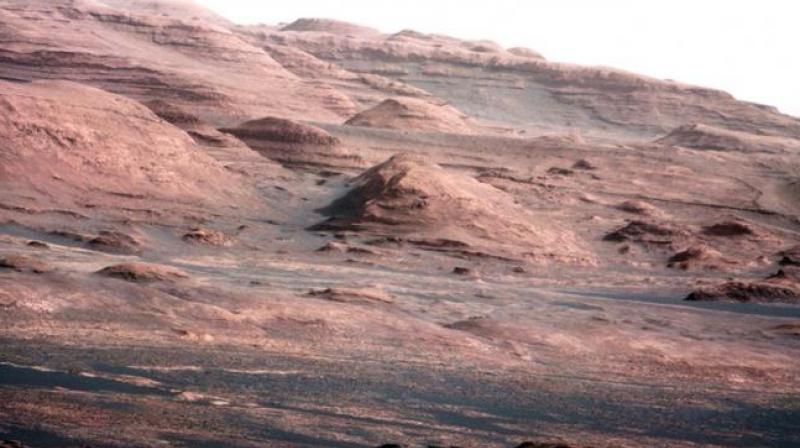Colonising other planets isn't feasible
Stephen Hawking has pointed out in a BBC programme that human beings need to colonise a planet soon.

Science fiction has traditionally used its imagination to show earthlings in a struggle with beings from another planet. Only recently in movies has the tide been turned towards making an attempt to colonise other planets, mainly Mars.
Now a distinguished observer of the universe and a proponent of underlying laws that govern it, Stephen Hawking has pointed out in a BBC programme that human beings need to colonise a planet soon and they must start in the next 100 years if the species is to be kept alive. This is because humanity is in danger of extinction because of climate change, overpopulation, chemical and nuclear wars. If this is a pessimistic view of human possibilities, the solution is even more fragile. Even earlier Mr Hawking had maintained that a disaster on Earth was a “near certainty”.
Just the cost and the effort need to transport millions of men, women and children to other planets (even Mars) would be so beyond our capabilities. An American entrepreneur, Elon Musk, is one who believes humans populating Mars is possible.
Mr Musk explained recently that he would use a spaceship and rocket to launch humans into orbit, bring the booster back to Earth to refuel, then send it back into orbit to rendezvous with the ship and fuel up for the trip to Mars. The first human mission could take place in 2024, he said, and could deliver people to the planet in about 80 days. This “Interplanetary Transport System” would cost about $200,000 per person. This is much lower than its present cost of around $10 billion per person, and it is not at all clear how the drastic reduction in cost would be achieved.
For the plan to succeed it must be a self-sustaining civilisation that would have around one million people, and that it would take 40 to 100 years from the first landing to reach that threshold, says Mr Musk. This would be accomplished by sending 100 to 200 people each at a time in a fleet of about 1,000 ships, each of which would make a trip about every two years.
Such ambitious plans have been given acceptability by films like The Martian where an astronaut/biologist is left behind mistakenly on Mars by his team and manages to survive by growing potatoes on soil made fertile by his own excrement. The movie renewed interest in travel to Mars.
Mars is the nearest planet and the one thought to be most suitable for colonisation. Unlike the moon it has a thin atmosphere and the temperature does not oscillate between extreme heat and cold. Yet civilian traffic even to Mars will cost a lot of money and human settlement of the planet can only be for the rich or those specially talented, not by lottery, in which people are chosen at random by a stroke of luck. Thus it would not be a cross-section of the human species that would be saved but only a privileged section of it. At a time when the survival of people on Earth and outside it is at stake, there can be widespread disturbances and riots. It is not a happy end of human existence on Earth but a very disturbing one.
Science fiction has dreamt further. A recent film, Interstellar, examines failing agriculture on Earth leading to the planet’s inability to support life itself while a small secret band of scientists plan trips to the stars. Two of the three colonies they try to found fail while only the third may succeed. This carries the possibilities of Mr Hawking’s vision to an extreme. The route to the stars and the dangers that lie on that path are little understood even in fiction, let alone in scientific terms, so it becomes little more than an alluring if unattainable fantasy.
Yet, Mr Hawking’s vision involves travel not just to nearby planets but to distant ones around other suns.
Though much sought, our knowledge of the possibility of such systems is still scanty. Astronomers have been looking for such possible habitable worlds for several decades but have no confirmed discovery so far. Mr Hawking’s remarks about finding a new planet “for the future of humanity” again added urgency under US President Donald Trump, who remains among the deniers of climate change. The US, the most industrialised country in the world, is backing away from commitments made under President Barack Obama.
Though climate change is only one of the dangers threatening life on Earth it is the most visible and one that humanity still has in its power to halt. But unless urgent measures are taken swiftly, the goal of just a two-degree centigrade rise in world temperature by the turn of the century is turning out to be a mirage. The way we are going, the average temperature rise would be much higher. Each degree centigrade rise in average temperature leads to greater threats around the world.
For instance, the most extreme possibility contemplated is an average temperature rise of six degrees centigrade. If this happens the polar ice caps would melt, raising the ocean levels by over 200 ft, the glaciers that supply much of the fresh water in rivers would dry out, and the fish would all be killed in tropical oceans, unable to survive the hot water. The existence of humanity would be severely threatened.
This is the real danger we face and it calls for united action, both at a political level as nations rise above their narrow interests, and a technological revolution that can reverse the buildup of greenhouse gases. Though difficult, it is more feasible than a mass migration to other planets, let alone the stars.

